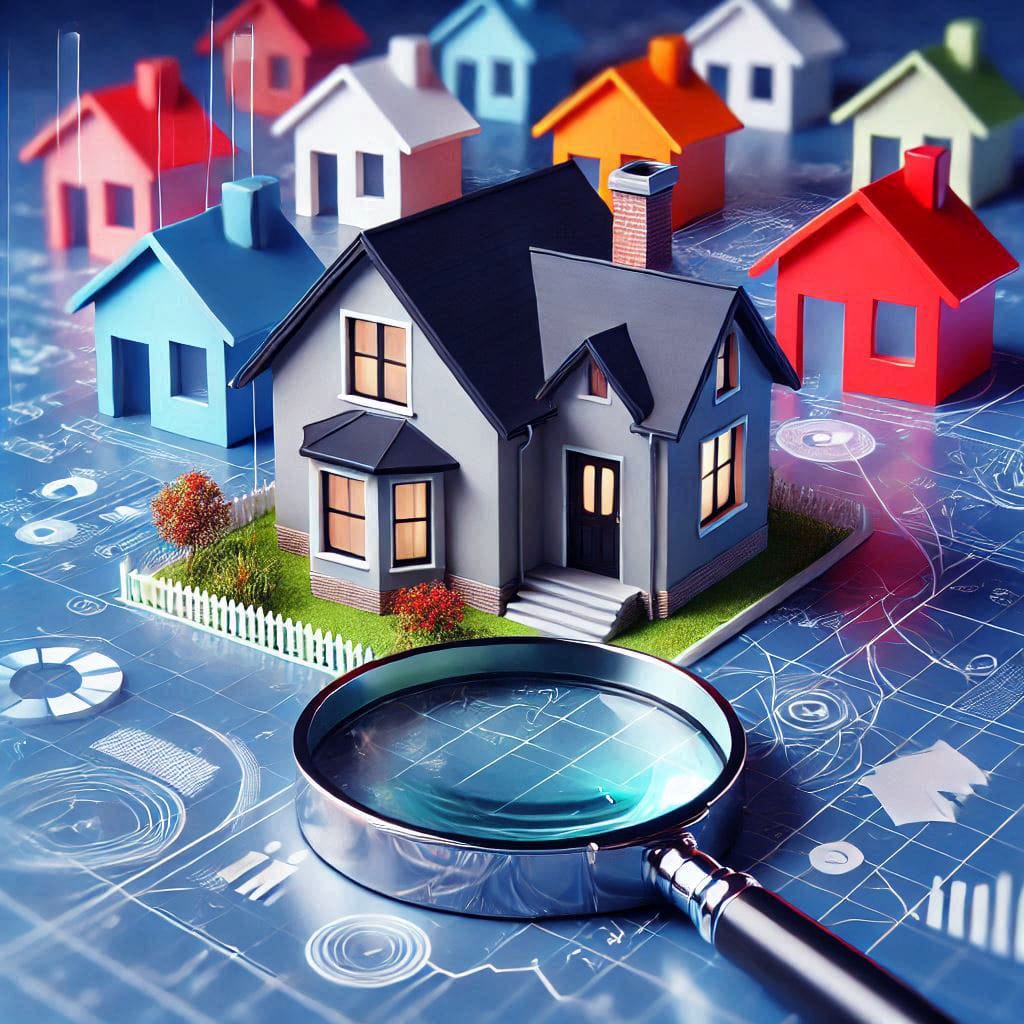10 Common Issues Found in Home Inspections
A home inspection is one of the most critical steps in the home-buying process. It provides a comprehensive understanding of a property’s condition and helps identify any major issues before closing.
Home inspectors are trained to catch a wide variety of problems, but some issues tend to come up more frequently than others. Understanding these common problems can help both buyers and sellers prepare for necessary repairs and avoid costly surprises. Here are 10 of the most common issues found during home inspections.
1. Roofing Problems
Roofing issues are among the most common problems found during home inspections. Over time, roofs can experience wear and tear due to weather exposure, poor maintenance, or aging materials.
Inspectors typically look for damaged or missing shingles and flashing, as well as areas with excessive moss or algae growth. They also check for signs of water damage or leaks, which can lead to significant issues if not addressed.
As roofs near the end of their lifespan, they may require costly repairs or even a full replacement. Regular roof maintenance, such as cleaning gutters, replacing damaged shingles, and addressing small issues early, can help extend the life of your roof and prevent major damage to your home.
2. Electrical Wiring Issues
Electrical issues are a serious concern for both safety and functionality. Inspectors look for outdated, faulty, or incorrectly sized wiring, overloaded circuits, and unsafe or poorly installed electrical panels.
Common problems include exposed wiring, ungrounded outlets, and circuits that may not support the load of modern appliances. Electrical systems in older homes may not be equipped to handle the demands of newer devices, leaving the home at risk of electrical failures or fire hazards.
Inspectors also look for signs of poor workmanship in DIY electrical work, often found in homes that have undergone renovations without a licensed electrician. Repairing these issues can be costly, but it is crucial for ensuring the home’s safety and preventing potential hazards.
3. Plumbing Problems
Plumbing issues are often hidden behind walls or under floors, but they can be some of the most expensive to repair. Inspectors look for leaks in pipes, which can cause water damage, mold growth, or rotting of structural components. They also assess water flow, drainage, and the condition of water heaters, plumbing fixtures, and drains.
Galvanized pipes, often found in older homes, can corrode and cause low water pressure, while Polybutylene pipes, commonly used in the 1970s and 1980s, are prone to cracking and failure. Corroded or damaged pipes, especially in older homes, may need to be replaced.
Additionally, improperly installed or malfunctioning sump pumps, sewer lines, or drainage systems can lead to long-term issues. Plumbing inspections help determine if these systems are functioning properly and whether future repairs or replacements may be required.
4. Foundation Issues
A solid foundation is critical to the structural integrity of a home. Foundation issues are a significant concern because they can often be expensive and challenging to repair.
Inspectors look for cracks in walls or floors, uneven floors, and doors or windows that don’t close properly. These are all signs that the foundation may be settling or shifting. They also check for water damage around the foundation, which can cause soil movement and further damage.
Other potential problems include improper grading that allows water to pool near the foundation or inadequate or improperly supported beams. If a home has foundation issues, further evaluation by a structural engineer may be necessary to determine the extent of the damage and the potential repair costs.
5. HVAC System Deficiencies
The HVAC (heating, ventilation, and air conditioning) system is vital for maintaining a comfortable living environment. Inspectors evaluate the system’s age, condition, and functionality, checking for signs of wear, improper installation, or lack of maintenance. Problems might include clogged filters, malfunctioning thermostats, faulty condensate lines, or inefficient heating and cooling units.
Older HVAC systems can be less efficient, and systems that use outdated refrigerants – such as R-22, which is no longer available – may face difficulties in getting parts or servicing, often requiring expensive repairs or a full replacement. Regular maintenance, such as cleaning filters and checking system components, is essential for maximizing efficiency and extending the lifespan of the system.
An inspection can also reveal issues such as improper or blocked airflow, ductwork leaks, or insufficient duct insulation. Homeowners may need to invest in servicing or upgrading their HVAC system to ensure it functions efficiently and provides reliable comfort.
6. Water Damage and Suspected Mold
Water damage can occur from a variety of sources, including leaky roofs, faulty plumbing, or poor drainage. During an inspection, inspectors check for both prior and active water stains, rotting wood, and visible signs of mold-like growth in areas such as basements, attics, and around windows or doors.
Mold growth is particularly concerning because it can affect air quality and cause health issues for sensitive individuals. It may also indicate a history of moisture problems that have not been properly addressed. If left untreated, water damage can weaken the structural integrity of the home and lead to expensive repairs. Preventing water infiltration and addressing leaks promptly is crucial to avoiding long-term issues with mold and mildew.
7. Pest and WDI (Wood-Destroying Insect) Problems
Pests such as termites, rodents, and insects can cause significant damage to a home. Termites, in particular, can go unnoticed for long periods, feeding on wood and compromising the structural integrity of the house.
Inspectors look for signs of pest activity, including droppings, damaged wood, or nests. For WDIs, they specifically check for wood damage, hollowed-out areas, and channels that may indicate an infestation.
Inspectors also check for proper sealing of holes or cracks in the exterior of the home where pests can gain entry. Signs of rodent activity, such as gnaw marks, droppings, or urine stains, are also red flags. A pest infestation can lead to costly remediation and repairs, so it’s important to address any issues promptly before they escalate.
8. Insufficient Insulation
Proper insulation helps regulate temperature, improve energy efficiency, and prevent issues like mold growth and ice damming. When accessible, home inspectors evaluate the amount and quality of insulation in the attic and floors.
Insufficient insulation can cause heat loss in winter and excessive heat gain in summer – leading to decreased comfort and higher utility bills. It can also result in moisture buildup, especially in attics or crawl spaces, which can encourage mold growth. In colder months, poor attic insulation can lead to ice damming – a buildup of ice along the eaves of the roof, which can trap water and damage the roof and interior of the home.
In older homes, insufficient insulation may be a common issue, requiring upgrades to bring the home up to modern energy standards. Ensuring proper insulation can reduce energy costs and improve overall comfort in the home.
9. Poor Drainage
Proper drainage is essential for protecting a home’s foundation and preventing water-related damage. Inspectors evaluate the grading of the property to ensure that water is directed away from the foundation. They also check the condition and placement of gutters and downspouts to ensure they effectively channel water away from the home.
Poor drainage can lead to water pooling near the foundation, causing foundation damage, basement flooding, or erosion. Additionally, vegetation too close to the home can trap moisture against walls, leading to mold growth or wood rot. Ensuring that water flows properly away from the house and keeping plants and soil at a safe distance from exterior walls are crucial for maintaining the integrity of the home.
10. Siding and Exterior Cladding Issues
Water is the worst enemy of a home, and the siding acts as its first line of defense. Inspectors look for cracks, warping, rot, or peeling paint, which can signal moisture infiltration and potential structural damage. They also check for missing or improperly installed flashing or caulking, which can allow water to penetrate and worsen the issue. Improperly installed siding or missing sections can let water seep into the underlying structure, leading to wood rot, mold growth, or even insect infestations.
Additionally, damaged or aging siding may fail to provide adequate insulation, raising energy costs. It can also decrease the home’s curb appeal and market value. Regular inspection and maintenance of the exterior cladding are essential to protecting the home from environmental damage, preventing costly repairs, and ensuring its longevity.
Conclusion
While every home inspection is unique, these 10 issues are among the most commonly found by inspectors. Identifying and addressing them early can save homeowners time, money, and stress. Whether you’re buying or selling, it’s important to work with a qualified home inspector who provides a thorough evaluation. To learn more about the expected lifespans of various home components, check out our component life expectancy guide for a comprehensive look at how long major systems and materials are expected to last.
Ready to ensure your new home is free from these common issues? Schedule your comprehensive inspection today! For more reasons to choose Modern Insight Home Inspections, visit the Why Work With Us page.




